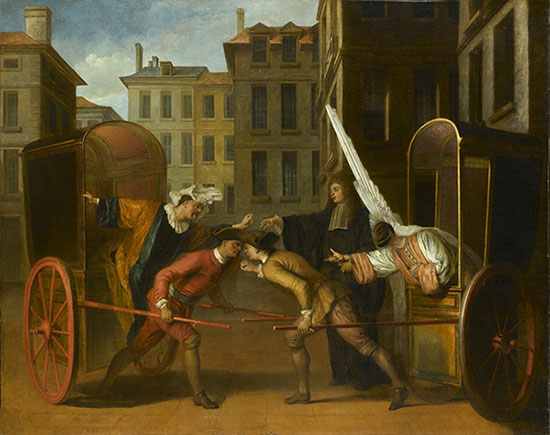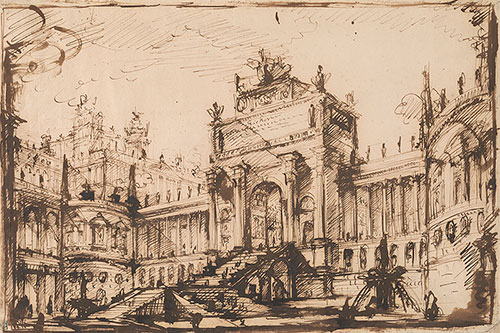At New York's Morgan Ahead: Claude Gillot, Satire in the Age of Reason and Sublime Ideas, Drawings by Giovanni Battista Piranesi
She Who Wrote: Enheduanna and Women of Mesopotamia, ca. 3400–2000 B.C.
She Who Wrote: Enheduanna and Women of Mesopotamia, ca. 3400-2000 B.C. brings together for the first time a comprehensive selection of artworks that capture rich and shifting expressions of women’s lives in ancient Mesopotamia during the 3rd millennium B.C. These works bear testament to women’s roles in religious contexts as goddesses, priestesses, and worshippers as well as in social, economic and political spheres as mothers, workers, and rulers. One particularly remarkable woman who wielded considerable religious and political power was the high priestess and poet Enheduanna (ca. 2300 B.C.), the earliest-named author in world literature. Bringing together a spectacular collection of her texts and images, this exhibition celebrates her timeless poetry and abiding legacy as an author, priestess, and woman.
Field trips are available for school, camp, and community groups.
Inspired by Enheduanna, the Morgan is hosting a creative writing contest for teens.
She Who Wrote: Enheduanna and Women of Mesopotamia, ca. 3400-2000 B.C. is made possible through the generosity of Jeannette and Jonathan Rosen.
Cylinder seal (modern impression) with goddesses Ninishkun and Ishtar, Mesopotamia, Akkadian, Akkadian period (ca. 2334–2154 BC), Cuneiform inscription: To the deity Niniškun, Ilaknuid, [seal]-cutter, presented (this), Limestone. The Oriental Institute of the University of Chicago, acquired 1947; A27903.
Onsite exhibition tours run Tuesday through Sunday at 2:00 p.m. beginning on October 21, 2022 through February 16, 2023.
Claude Gillot: Satire in the Age of Reason

Around 1700, as an increasingly pious Louis XIV withdrew to Versailles, Paris flourished. The dynamic artistic scene included specialists such as Claude Gillot (1673–1722) who forged a career largely outside of the Royal Academy, designing everything from opera costumes to tapestries. Known primarily as a draftsman, Gillot specialized in scenes of satire. He found his subjects among the irreverent commedia dell’arte performances at fairground theaters, in the writings of satirists who waged the Quarrel of the Ancients and Moderns, and in the antics of vice-ridden satyrs whose bacchanals exposed human folly. Gillot’s amusing critiques and rational perspective heralded the advent of the Age of Reason while his innovative approach attracted the most talented artists of the next generation, Antoine Watteau and Nicolas Lancret, to his studio.
With over seventy drawings, prints, and paintings, including an exceptional contingent from the Louvre, Claude Gillot: Satire in the Age of Reason explores the artist’s inventive and highly original draftsmanship and places his work in the context of the artistic and intellectual activity in Paris at the dawn of a new century.
The catalogue accompanying the exhibition will provide the first comprehensive account of Gillot's career.
Claude Gillot: Satire in the Age of Reason is made possible by The Florence Gould Foundation, and by generous support from the Eugene V. and Clare E. Thaw Charitable Trust and the Alex Gordon Fund for Exhibitions. Additional support is provided by Diane A. Nixon, the Samuel H. Kress Foundation, Lionel Sauvage, Dr. Joan Taub Ades, Hubert and Mireille Goldschmidt, and Janet Mavec.
Claude Gillot, Scene of the Two Carriages, ca. 1710-12. Oil on canvas. Département des peintures, Musée du Louvre, Paris; RF2405.
Sublime Ideas: Drawings by Giovanni Battista Piranesi

In a letter written near the end of his life, Giovanni Battista Piranesi (1720–1778) explained to his sister that he had lived away from his native Venice because he could find no patrons there willing to support “the sublimity of my ideas.” He resided instead in Rome, where he became internationally famous working as a printmaker, designer, architect, archaeologist, theorist, dealer, and polemicist. While Piranesi’s lasting fame is based above all on his etchings, he was also an intense, accomplished, and versatile draftsman, and much of his work was first developed in vigorous drawings.
The Morgan holds the largest and most important collection of Piranesi’s drawings, well over 100 works that encompass his early architectural capricci, studies for prints, measured design drawings, sketches for a range of decorative objects, a variety of figural drawings, and views of Rome and Pompeii. These form the core of the exhibition, which will also include seldom-exhibited loans from a number of private collections. Accompanied by a publication offering a complete survey of Piranesi’s work as a draftsman, the exhibition will be the most comprehensive look at Piranesi’s drawings in more than a generation.
Sublime Ideas: Drawings by Giovanni Battista Piranesi is made possible by The Gilbert & Ildiko Butler Family Foundation; the Lucy Ricciardi Family Exhibition Fund; the Wolfgang Ratjen Stiftung, Liechtenstein; and Joshua W. Sommer. Generous support is provided by the Berger Collection Education Trust and Alyce Williams Toonk, with additional support from The George Ortiz Collection, Robert Dance, the Gladys Krieble Delmas Foundation, and Russell and Marian Burke.
Giovanni Battista Piranesi, Fantasy of a Magnificent Forum, ca. 1765. Pen and brown ink and wash, 329 x 491 mm. Morgan Library & Museum, New York, inv. 1974.27.






